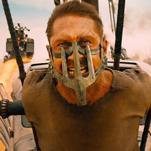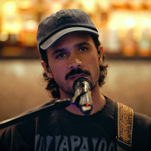The 21 Best Documentaries on Amazon Prime

Amazon Prime’s “Documentary” selection, like much of the retail giant’s movie library, can be overwhelming to browse, with plenty of low-budget, slapped-together fare. Many of our favorite docs that used to be free for Prime members are now part of additional subscriptions like Doc Club, Sundance Now and Topic. But there are some gems hidden among the dreck, and we’ve dug deep to find them for you. The following list includes Oscar winners and some of our favorite documentaries of all time, films from celebrated directors like Jim Jarmusch, Sarah Polley and Steve James—all free to stream with your Prime membership.
Here are the 21 best documentaries streaming on Amazon Prime Video:
1. I Am Not Your Negro Year: 2017
Year: 2017
Director: Raoul Peck
Genre: Documentary
Rating: PG-13
Raoul Peck focuses on James Baldwin’s unfinished book Remember This House, a work that would have memorialized three of his friends, Martin Luther King Jr., Malcolm X and Medgar Evers. All three black men were assassinated within five years of each other, and we learn in the film that Baldwin was not just concerned about these losses as terrible blows to the Civil Rights movement, but deeply cared for the wives and children of the men who were murdered. Baldwin’s overwhelming pain is as much the subject of the film as his intellect. And so I Am Not Your Negro is not just a portrait of an artist, but a portrait of mourning—what it looks, sounds and feels like to lose friends, and to do so with the whole world watching (and with so much of America refusing to understand how it happened, and why it will keep happening). Peck could have done little else besides give us this feeling, placing us squarely in the presence of Baldwin, and I Am Not Your Negro would have likely still been a success. His decision to steer away from the usual documentary format, where respected minds comment on a subject, creates a sense of intimacy difficult to inspire in films like this. The pleasure of sitting with Baldwin’s words, and his words alone, is exquisite. There’s no interpreter, no one to explain Baldwin but Baldwin—and this is how it should be. —Shannon M. Houston
2. Stories We Tell Year: 2013
Year: 2013
Director: Sarah Polley
Rating: PG-13
Runtime: 108 minutes
With Stories We Tell, actress-turned-director Sarah Polley has proven herself a consummate filmmaker, transforming an incredible (and incredibly) personal story into a playful yet profound investigation of the nature of storytelling itself. The central mystery to her documentary—that the man she grew up believing to be her dad is not her biological father—is public knowledge at this point, easily revealed in the film’s trailer and associated marketing. Yet Polley conceals and reveals information—starting with her relationships to her interview subjects—in such an effortless way as to constantly surprise, even shock, her audience without leaning into revelations for the sake of them. The result is a film that scrutinizes the ultimate purpose of truth—only to come up with a gorgeously rendered shrug. —Annlee Ellingson
3. Time Year: 2020
Year: 2020
Director: Garrett Bradley
Rating: PG-13
Runtime: 81 minutes
Hope and despair constitute the vacillating emotions of Garrett Bradley’s Time, a lyrical look at Sibil “Fox” Rich’s efforts to free her husband from the Louisiana prison where he serves 60 years for a botched bank robbery, as his sons grow up without a father in the home (Fox herself served a few years for aiding in the crime). Her dogged attempts to break through to an uncaring bureaucracy are crushing in and of themselves, but the mannered composure with which she takes denial after denial builds a remarkable portrait of strength and resolution. One could ask how much Time grapples with the legitimate wrongdoing of the Rich parents, but Bradley does not give much credence to the question, because to do so would legitimize the system that, in doling out sentences so severe, ignores the humanity of the perpetrators in the first place. Sibil’s understanding of the morality of her and her husband’s situation is obvious, but also somewhat outside of the purview of Time, which is, for the better, much more concerned with the personal dynamic of the central relationship: how one sustains love and life when divided by an uncompromising and punishing system. The answer, in the case of the Riches, is Sibil’s home-made video diaries from a miniDV camera over the years, patched together with a score that gives the entire film the feel of a swelling epic—the intensely personal elevated to mythical proportions. Time truly builds to an ultimate moment of catharsis, an already deeply human moment filled with the additional powers of cinematic grace. —Daniel Christian
4. Dear Zachary: A Letter to a Son About His Father
Year: 2008
Director: Kurt Kuenne
Rating: 18+
Runtime: 93 minutes
Kurt Kuenne was childhood friends with a man named Andrew Bagby, who, in late 2001, was murdered by ex-girlfriend Shirley Turner. Relieved he’d finally put an end to a turbulent relationship, he had no idea Turner was pregnant. So she killed him, then fled to Newfoundland, where she gave birth to Bagby’s son, Zachary. This is how Dear Zachary begins: a visual testament to both Andrew Bagby’s life, as well as the enduring hearts of his parents, who, as Kuenne chronicles, moved to Newfoundland after their son’s murder to begin proceedings to gain custody of Zachary. Kuenne only meant the film to be a gift, a love letter to his friend postmarked to Zachary, to allow the baby to one day get to know his father via the many, many people who loved him most. Told in interviews, photos, phone calls, seemingly every piece of detritus from one man’s life, Kuenne’s eulogy is an achingly sad portrait of someone who, in only 28 years, deeply affected the lives of so many people around him. And then Dear Zachary transforms into something profoundly else. It begins to take on the visual language and tone of an infuriating true-crime account, painstakingly detailing the process by which Bagby’s parents gained custody and then—just as they were beginning to find some semblance of consolation—faced their worst nightmares. The film at times becomes exquisitely painful, but Kuenne has a natural gift for tension and pacing that neither exploits the material nor drags the audience through melodramatic mud. In retrospect, Dear Zachary’s expositional approach may seem a bit cloying, but that’s only because Kuenne is willing to tell a story with all the disconsolate surprise of the tragedy itself. You’re gonna bawl your guts out. —Dom Sinacola
5. Whose Streets? Year: 2017
Year: 2017
Director: Sabaah Folayan
Rating: R
Runtime: 100 minutes
Following the murder of 18-year-old Michael Brown by a police officer in Ferguson, Missouri, filmmakers Sabaah Folayan and Damon Davis examine the American media’s biased, racist coverage of the tragedy and the protests in response. Whose Streets? asks that—rather than if black lives matter to prosecutors, or State’s Attorneys or the American police (all culprits in the teen boy’s modern-day lynching)—viewers place their faith in those real heroes, like activists Brittany Farrell and David Whitt. You might go into Whose Streets? expecting to simply see a film about the Black Lives Matter movement and some of the people behind it. And if you are of the opinion that black lives do matter, you might expect to be moved and motivated to either continue on in your activism, or take to the streets for the first time in your life. I, for one, anticipated another powerful, but difficult, film, similar to 13th and this year’s equally excellent The Blood is on The Doorstep. And while I was right, I also had no idea how deeply personal the protestors’ stories would get. The directors frame the film around the very young children of the activists they follow, but Whose Streets? is one of those rare and wonderful experiences in which a piece’s framing manages to both enhance and intensify the central narrative. “Whose Streets?” refers to the protest chant encouraging people to take back their neighborhoods from the cops and racist, classist policies that would seek to destroy them, but the answer to the question is actually more devastating: These streets—whether they’re covered in the blood of slain, unarmed black people, or humming with protestors both peaceful and riotous, or swarming with members of the national guard in tanks, sent in to militarize an entire city—these streets are always seen and experienced through the eyes of those with the least ability to change it, and the most to lose. By personalizing the experiences of their activist subjects, and demanding viewers see how the subjects’ choices and sacrifices directly impact their children and families, Whose Streets? becomes all about the kids and, therefore, all about the the future. And so much of that future, the film seems to insist, is dependent on the emotion and anger that keeps the film’s subjects in the streets, and the cameras in the hands of the filmmakers who also put their own bodies on the line. A political documentary that dares acknowledge rage as a tool as useful as hope or faith: That is one that [Black] America will surely need in 2017, and beyond. —Shannon M. Houston
6. Life Itself Year: 2014
Year: 2014
Director: Steve James
Rating: R
Runtime: 120 minutes
Life Itself may tell the story of a remarkable life, but it’s at its most enlightening when dealing with death. Steve James’s documentary on Roger Ebert naturally chronicles its subject’s exploits, trials and triumphs as he became the most recognizable film critic in the United States, but it weaves his life story around footage shot during the last months of his life, as we see the effect his impairments and mortality have on him and his loved ones. While the director’s best-known works like Hoop Dreams and The Interrupters mainly use location footage and naturalistic interviews shot by James himself, the historical segments of Life Itself take on a slick production quality that would be more closely associated with Ken Burns—complete with old photos and archival footage. While the movie jumps around chronologically, its contemporary footage is the pivot on which it all turns. But James is most at home while working with his own footage, and that’s where the movie really shines. Shooting began a few months before Ebert’s death, but no one knew that the end would come so soon. Ebert had been publicly battling cancer for several years, after all; surgeries and subsequent complications in 2006 left him with no jaw, nearly unrecognizable and unable to eat without tubes or speak without a computer. When James joins him, Ebert is doing even worse after breaking his hip. It’s fitting that Ebert often professed his love for documentaries that unfold in a way the filmmakers couldn’t have predicted when production began. He would have loved this one. —Jeremy Mathews
7. Human Flow” Year: 2017
Year: 2017
Director: Ai Weiwei
Rating: PG-13
Runtime: 160 minutes
Human Flow isn’t about its creator, Ai Weiwei, but one of its key moments, occurring about a half an hour before its end, is pure Ai. On their tour of hotspots in our burgeoning global refugee crisis, the director and his crew stop at the U.S./Mexico border to capture footage and talk with locals living on the line of delineation separating the two countries. As the crew films, they are at one point interrupted by the arrival of an American yokel riding a four-wheeler. Whether he’s official or just some self-styled border patrolling vigilante is unclear, though his intent to intimidate the filmmakers is crystalline. Ai Weiwei, having spent the better part of the film’s two-hour running time demonstrating his unfailing grace alongside his bottomless compassion, scarcely reacts. He doesn’t even budge. Ai is not a man you can easily cow. If you’ve read about his trials in China, or watched Alison Klayman’s excellent 2012 documentary Ai Weiwei: Never Sorry, then you know this well enough. But watching his mettle in action in Human Flow inspires a different reaction than it does in Never Sorry. Rather than admire his boldness, we’re invited to search out that boldness in ourselves. The problem that Human Flow documents is massive and gaining in scope, chronicled first as a trickle, then a stream, then a torrent, now a deluge—soon a tsunami. The crisis of our refugees all over the world isn’t a problem one fixes merely by, for instance, banging away at a keyboard or saying pretty things in public spaces. Instead, the problem requires action, and Human Flow, generously taken at face value, is a tribute to those in the trenches: relief workers, volunteers, doctors, academics and lawmakers fighting to give refugees fleeing disease, famine and violence unimaginable to many of us the respect and protection they deserve. In turn, the film asks the audience to what lengths they would go to safeguard innocent people from harm, to give them opportunities to make their lives better. Ai has no vanity; he does not position himself as the hero. Through his devotion to his subjects, Human Flow reminds us how much work it is to help the helpless. The tragic conclusion is that we’re not doing enough. —Andy Crump
8. Muscle Shoals Year: 2013
Year: 2013
Director: Greg “Freddy” Camalier
Genre: Documentary, Music
Rating: PG
Runtime: 1111 minutes
Freddy Camalier’s masterly Muscle Shoals is about the beginnings and heyday of the recording scene in Muscle Shoals, Ala., a tiny town that improbably changed the face of rock ‘n’ roll forever. First-timer Camalier is obviously a natural storyteller, but there’s so much more to the doc than promise—the cinematography is lush and beautiful, the editing is crisp and precise, and it’s in turns heartbreaking, inspiring, wry, thought-provoking, nostalgic and genuinely funny. It’s simply a stunning debut film. It helps that Camalier and his producing partner Stephen Badger are after more than just a lesson in musical history: They delve into the Civil Rights Movement and its effect specifically on Alabama, especially as it relates to a Muscle Shoals music scene that was, shockingly enough, lacking in any racial tension. They return again and again to the ancient Native American legend about the river that flows through the town, and the water spirit who lived there, sang songs and protected the town. Not to mention that the personal life of Fame Records founder Rick Hall, the protagonist of the film, is itself worthy of a Faulkner novel. Muscle Shoals is thrilling, it’s engaging, it’s fascinating, it’s stirring, it’s epic—whether you’re a music lover or not. —Michael Dunaway
9. Dior and I Year: 2015
Year: 2015
Director: Fr?d?ric Tcheng
Rating: R
Runtime: 90 minutes
In 1956, French designer Christian Dior wrote a memoir detailing his life and the first 10 years of his iconic fashion house. The luxury brand lost its founder just a year later when Dior passed away at the age of 52. Subsequently, the House Of Dior has had six creative directors, including the legendary Yves Saint Laurent. Dior and I chronicles the beleaguered process of latest leader, Belgian designer Raf Simons, as he struggles to both prove himself in the long shadow of everything to come before, and debut his first Dior collection. When Simons was selected to take over in 2012, he was a relative unknown. A former menswear designer for Jil Sander, he favors a minimalist approach to clothing, making him far from the most obvious choice for the role of visionary behind the historically lavish fashion house. Director Fr?d?ric Tcheng—who, in previously working on Valentino: The Last Emperor and co-directing Diana Vreeland: The Eye Has To Travel, has seemingly emerged fully formed as the ideal person to capture the mood and character of this designer at a pivotal point in his career—used a small crew to follow Simons for his first three months on the job, intimately embedded with a stranger, an amateur in the world of Haute Couture. Dior and I expertly observes all aspects of Simons’ stressful transition, especially in the minutiae of being both an artist and a manager. Throughout the film, Simons is never far from his right-hand man, Pieter Mulier, and at times the pair slip into “good cop/bad cop” roles when dealing with the staff. This makes sense, because it allows Simons to remain somewhat insulated from any internal criticism as he continues to tweak the collection under duress, though his staff can’t help but have to compensate for the difficulty that insulation places on their own roles. Yet, Tcheng infuses this rapid tale of the modern fashion process—accompanied by a pulsating electronic soundtrack from artists like The Knife, The xx and Aphex Twin—with voiceover narration reading passages from Dior’s memoir. In this deft blending of past, present and future, Tcheng affirms that Mr. Simons has the utmost concern for protecting the legacy he’s inherited. Having shot over 250 hours of footage, Simons edited down his story to a succinct 89 minutes to emphasize the intensity of his behind-the-scenes look: This is what it takes to pull off a big reveal, to survive in an environment subconsciously bent on proving him wrong. —Matt Shiverdecker
10. City of Ghosts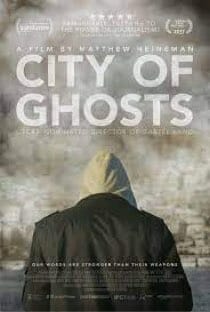 Year: 2017
Year: 2017
Director: Matthew Heineman
Rating: R
Runtime: 92 minutes
There need not be a documentary about the Syrian catastrophe to rally the world around its cause—just as, in Matthew Heineman’s previous film, Cartel Land, there was no need to vilify the world of Mexican cartels or the DEA or the paramilitaristic nationalists patrolling our Southern borders to confirm that murder and drug trafficking are bad. The threats are known and the stakes understood, at least conceptually. And yet, by offering dedicated, deeply intimate portraits of the people caught up in these crises, Heineman complicates them beyond all repair, placing himself in undoubtedly death-defying situations to offer a perspective whose only bias is instinctual. So it is with City of Ghosts, in which he follows members of Raqqa is Being Slaughtered Silently, a group committed to using citizen-based journalism to expose the otherwise covered-up atrocities committed by ISIS and the Assad regime in Syria. In hiding, in Turkey and Germany and at an event for journalists in the U.S.—in exile—these men, who Heineman characterizes as a very young and even more reluctant resistance, tell of both the increasingly sophisticated multimedia methods of ISIS and their hopes for feeling safe enough to settle and start a family with equal trepidation about what they’ve conditioned themselves to never believe: That perhaps they’ll never be safe. Heineman could have easily bore witness to the atrocities himself, watching these men as they watch, over and over, videos of their loved ones executed by ISIS, a piquant punishment for their crimes of resistance. There is much to be said about the responsibility of seeing in our world today, after all. Instead, while City of Ghosts shares plenty of horrifying images, the director more often that not shields the audience from the graphic details, choosing to focus his up-close camera work on the faces of these men as they take on the responsibility of bearing witness, steeling themselves for a potential lifetime of horror in which everything they know and love will be taken from them. By the time Heineman joins these men as they receive the 2015 International Press Freedom Award for their work, the clapping, beaming journalists in the audience practically indict themselves, unable to see how these Syrian men want to be doing anything but what they feel they must, reinforcing the notion that what seems to count as international reportage anymore is the exact kind of lack of nuance that Heineman so beautifully, empathetically wants to call out. —Dom Sinacola
-

-

-

-

-

-

-

-

-

-

-

-

-

-

-

-

-

-

-

-

-

-

-

-

-

-

-

-

-

-

-

-

-

-

-

-

-

-

-

-

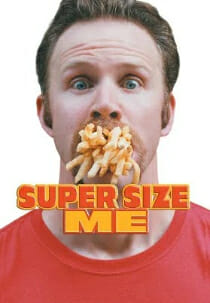 Year: 2004
Year: 2004 Year: 2016
Year: 2016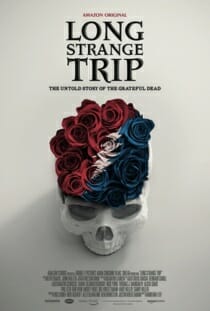 Year: 2017
Year: 2017 Year: 2016
Year: 2016 Year: 1977
Year: 1977 Year: 2016
Year: 2016 Year: 2015
Year: 2015 Year: 2019
Year: 2019 Year: 2006
Year: 2006 Year: 2014
Year: 2014 Year: 2021
Year: 2021







